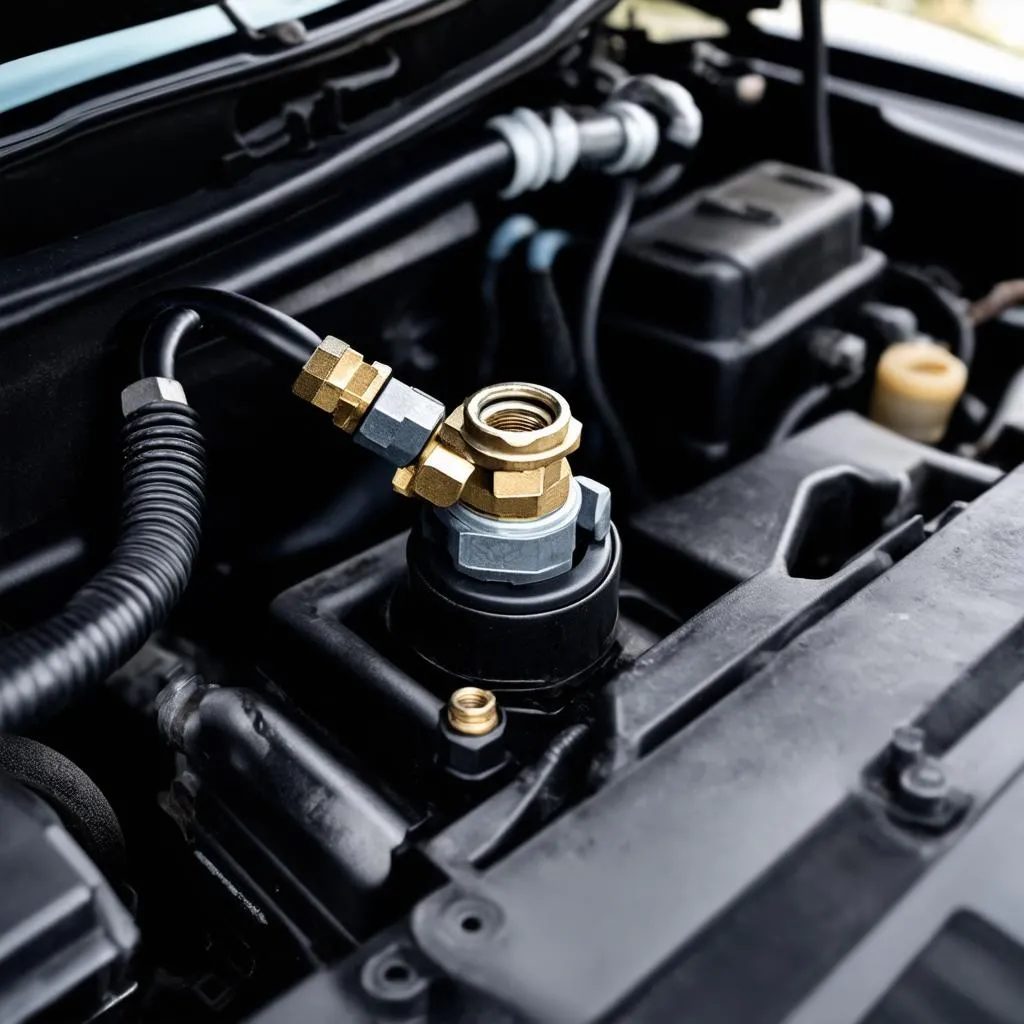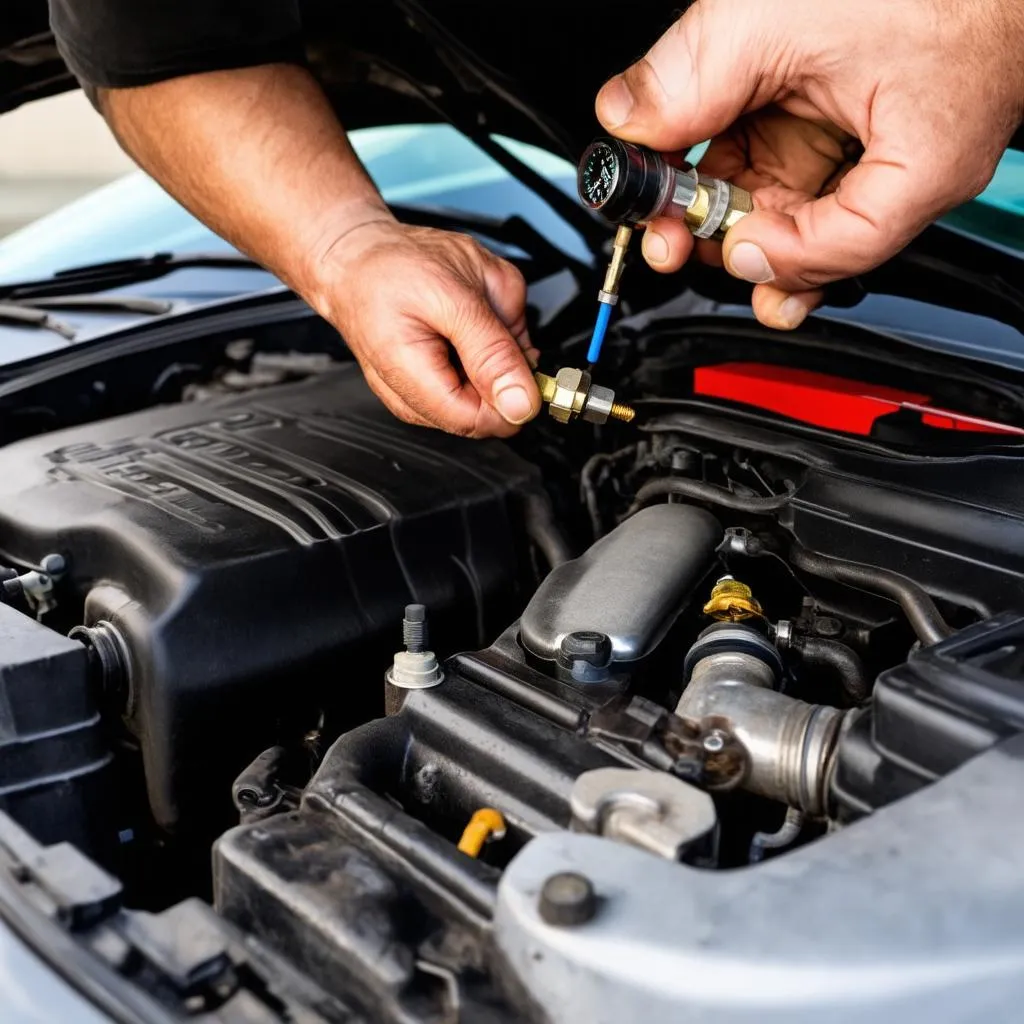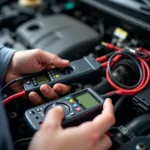Imagine you’re driving on the highway and suddenly the oil pressure warning light illuminates on your dashboard. A queasy feeling arises, right? Justifiably so, because oil pressure is essential for the lifespan and performance of your engine. And this is exactly where the oil pressure sensor comes into play.
The oil pressure sensor, also known as an oil pressure sender or switch, is a small component in the engine that measures the oil pressure and transmits this information to the engine control unit (ECU). Based on this data, the ECU regulates the oil supply and ensures that all moving parts in the engine are optimally lubricated.
“A functioning oil pressure sensor is just as important as the oil itself,” says experienced master mechanic Hans Meier from Berlin. “Without the correct information from the oil pressure sensor, serious engine damage can occur.”
How Does an Oil Pressure Sensor Work?
The oil pressure sensor is usually located near the oil pan or oil filter on the engine block. It consists of a diaphragm that deforms depending on the oil pressure. This deformation is converted into an electrical signal that is sent to the engine control unit.
Common Problems with the Oil Pressure Sensor
Although the oil pressure sensor is a robust component, problems can still occur. Common signs of a defective oil pressure sensor are:
- Oil pressure warning light illuminates: This is the most obvious sign of a problem with the oil pressure sensor or the oil pressure in general.
- Fluctuating oil pressure: If the oil pressure on the gauge in the dashboard fluctuates greatly, this may indicate a defective sensor.
- Unusual engine noises: A defective oil pressure sensor can lead to insufficient lubrication of the engine, which in turn can cause unusual noises.
What to Do if You Have Problems with the Oil Pressure Sensor?
If you notice any of the above symptoms, it is important to visit a workshop immediately. A defective oil pressure sensor should be replaced as soon as possible to avoid serious engine damage.
 Oil pressure sensor located in the engine compartment
Oil pressure sensor located in the engine compartment
Benefits of a Functioning Oil Pressure Sensor
A functioning oil pressure sensor offers numerous advantages:
- Protection of the engine: The correct function of the oil pressure sensor is essential for the lifespan of the engine.
- Optimal performance: Optimal lubrication of all moving parts in the engine ensures the performance of the vehicle.
- Reduced fuel consumption: An optimally lubricated engine runs more efficiently and consumes less fuel.
Questions About the Oil Pressure Sensor
- How often should the oil pressure sensor be replaced? There is no fixed requirement for replacing the oil pressure sensor. In case of doubt, however, you should follow the vehicle manufacturer’s recommendations.
- Can I replace the oil pressure sensor myself? Replacing the oil pressure sensor is generally possible even for hobby mechanics. However, you should have some basic knowledge and observe the safety precautions.
- Where can I find a new oil pressure sensor for my car? You can get a new oil pressure sensor for your vehicle in any well-stocked auto repair shop or in specialized retail.
 Mechanic replacing an oil pressure sensor in a car repair shop
Mechanic replacing an oil pressure sensor in a car repair shop
More Interesting Topics About Your Car
- Check engine light is on: What to do?
- Regular maintenance: How to keep your car in shape
- Oil change: How to do it right
Visit our website autorepairaid.com for more helpful tips and information about repairing and maintaining your car. Our car experts are happy to help you with any questions!
